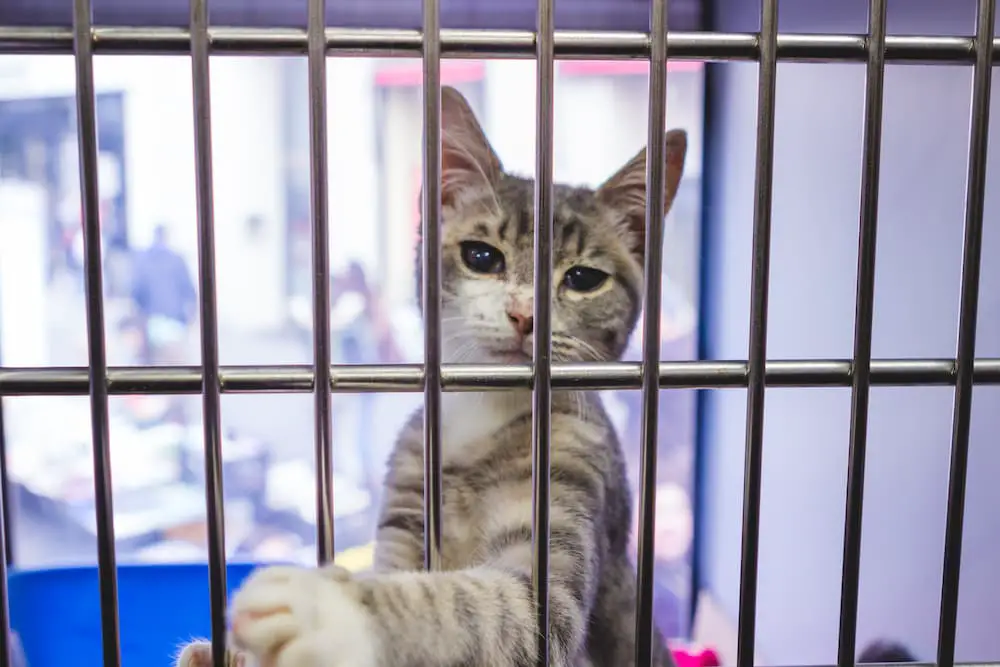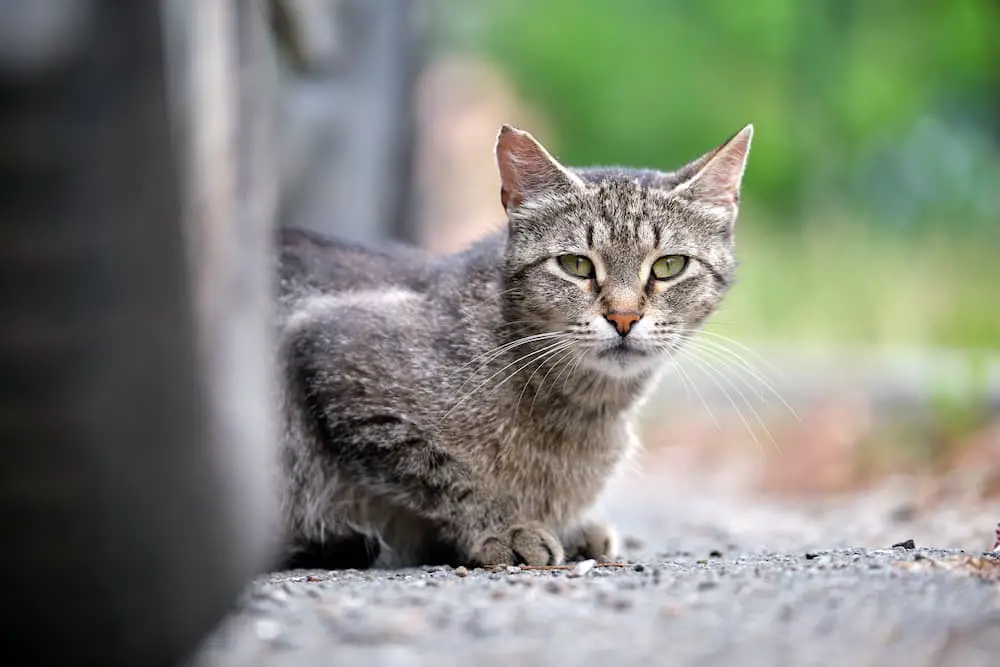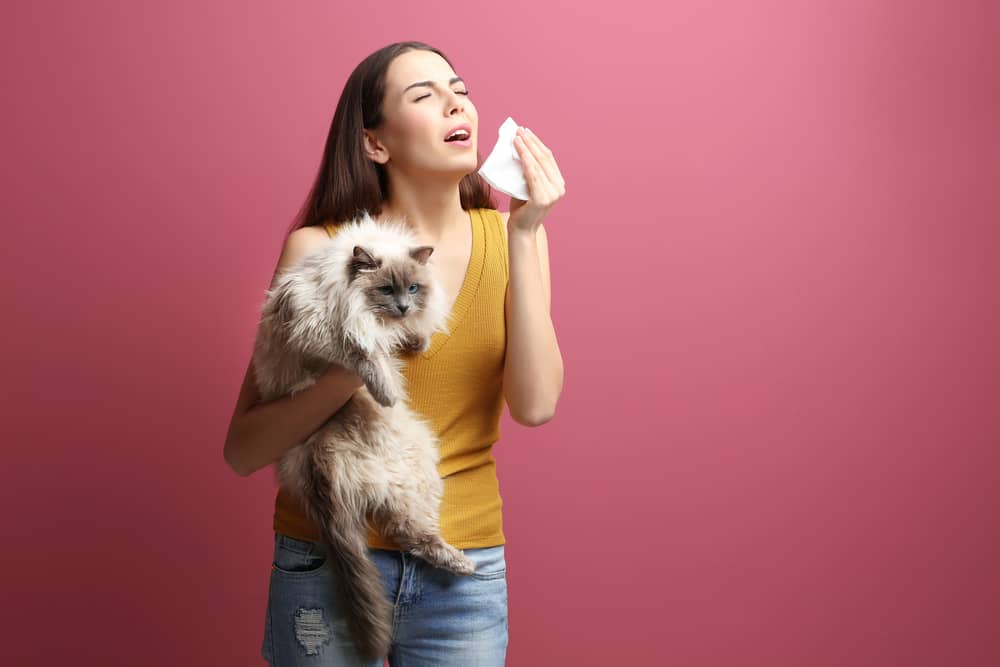
You just finished watching the 10th funny cat video today and have been strongly considering getting a cat for weeks. Should you just go for it?
Before you do, something to consider is whether you or anyone living with you has cat allergies. Cat allergies comprise the majority of pet allergies and are twice as common as dog allergies. Symptoms can vary, from the relatively mild (e.g. runny rose, watery eyes) to the more severe (e.g. swollen eyes, difficulty breathing). To test for cat allergies, speak to your doctor about some simple tests that can be run, such as the intradermal skin test or allergy skin prick test.
If cat allergies are a concern (but are not extremely severe), there are steps that you can take to mitigate the risk of allergic reactions.
What is “Hypoallergenic”?
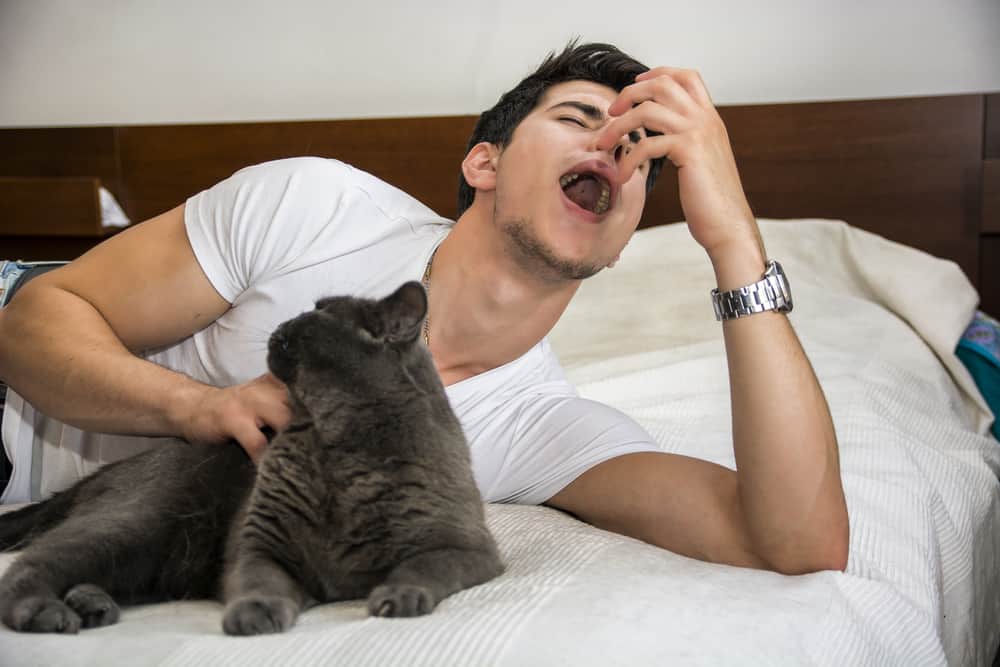
Hypoallergenic is defined as less likely to trigger an allergic reaction. With cats, the primary triggers of allergic reactions are the allergen proteins found in their saliva, sweat, urine, and dander. Dander refers to the “flecks of skin shed by cats” and is akin to dandruff for humans. Pet hair, contrary to common perception, is not an allergen. But it can collect and carry allergens. Coming into contact with these allergens will cause allergy symptoms. While is no such thing as an allergy-free cat, hypoallergenic cats will produce relatively less allergens, and therefore mitigate the chance of allergic reactions.
Hypoallergenic Cats
For cats, the “hypoallergenic” designation is given to those known to produce fewer allergens. This includes not only dander but also the glycoprotein Fel D1, which is “the primary cause of allergies to cats…and is produced by the sebaceous glands under the skin, and to a lesser degree is present in cat’s saliva”. This glycoprotein is found in higher levels in male cats and certain breeds.
Take a look at the list below, with a 👍 next to the ones with the LEAST allergens (less dander or less of the glycoprotein), according to PetSecure/Cattime:
- Arabian Mau
- Asian 👍
- Australian Mist
- Balinese 👍
- Bambino 👍
- Bengal
- Bombay
- Brazilian Shorthair 👍
- Burmese
- California Spangled
- Chausie 👍
- Colorpoint Shorthair
- Cornish Rex
- Cyprus
- Desert Lynx 👍
- Devon Rex 👍
- Donskoy 👍
- European Burmese
- European Shorthair
- German Rex
- Highlander
- Javanese
- Khao Manee 👍
- Korat 👍
- Kurilian Bobtail
- LaPerm
- Mekong Bobtail
- Ocicat
- Oriental Bicolor 👍
- Oriental Shorthair 👍
- Peterbald 👍
- Russian Blue 👍
- Serengeti 👍
- Siamese Cat
- Siberian 👍
- Singapura
- Sokoke 👍
- Sphynx 👍
- Thai
- Thai Lilac
- Tonkinese
- Toyger 👍
- Turkish Angora
- Turkish Van
- Ukrainian Levkoy 👍
What Else Can I Do to Prevent Allergic Reactions?
Choosing a hypoallergenic cat from the breeds listed above means that you’ve chosen a cat that produces less allergens as compared to non-hypoallergenic cats, generally speaking. Something to keep in mind is that because each cat is unique, you may find that you exhibit allergic symptoms towards one cat but not towards another cat of the same breed.
To further mitigate the risk of allergic reactions, some other steps you can take are as follows:
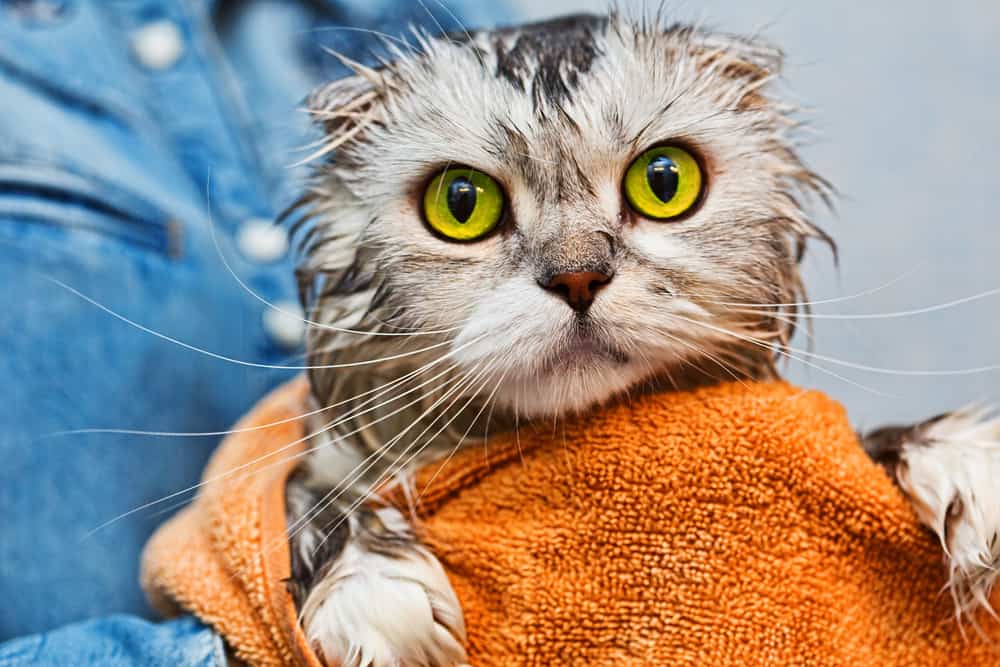
- Indoor vs Outdoor: Keeping your cat indoors will reduce the amount of shedding that is induced by the abundant amount of sunlight that accompanies the warmer months. While they will still shed, indoor cats notably shed much less than their outdoor counterparts.
- Grooming: De-shed your cat regularly to remove the loose hairs/undercoat. This will reduce the amount of hair that’s shed.
- Bathing: Bathe your cat more routinely (suggests weekly basis) to reduce the amount of dander (old skin cells). Cats are generally not the biggest fans of baths but can get used to it over time. Make sure to use a shampoo that is specifically formulated for cats, check with a vet for best options.
- Filters: Invest in a solid HEPA filter that will remove not only cat allergens floating in the air but also any dust mites, mold, or pollutants.
- Cleaning: Frequently wash articles that dander can cling onto, such as curtains, couch covers, and pillows with hot water. This will help remove trapped allergens. Vacuuming is also important, especially if you have rugs or carpet flooring, as they’re classic dander traps.
- Furniture: When shopping for furniture, opt for less porous materials, such as leather, plastic, metal, or wood over soft upholstery, which requires more work to clean.
- Hand-Washing: After petting your cat, be sure to thoroughly wash your hands with soap and hot water. As cats lick themselves routinely, the allergens can be found in high levels on their coat. Washing your hands ensures that you don’t transfer the allergens throughout your home.
Conclusion
With the right knowledge, it is very possible for someone who has cat allergies to own a cat. Hypoallergenic cats are great choices as they’re not only low producers of allergens but also more practical maintenance-wise.
For the corresponding full guide on hypoallergenic dogs, check out: Your Ultimate Guide to Hypoallergenic Dog Breed
About the Author
Lily Dee is a writer at The Pawsome World, a site dedicated to sharing valuable and reliable pet care content to help pets and their owners live their best lives. Being a pet parent isn’t always easy, and The Pawsome World provides tips/hacks as well as
heartwarming content that pet lovers can rely on.

